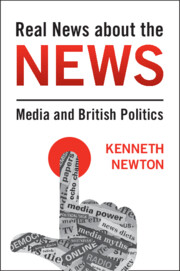Book contents
- Real News about the News
- Real News about the News
- Copyright page
- Dedication
- Contents
- Tables
- 1 Massive and Minimal Media Effects
- 2 The News Landscape
- 3 News Diets
- 4 Avoiding, Rejecting, Ignoring and Accepting
- 5 Digital Pessimism
- 6 Newspapers, Voting and Agenda-Setting
- 7 Media Malaise and the Mean World Effect
- 8 Personal Experience as a Reality Check
- 9 Pluralism and Democracy
- 10 Practical Lessons
- Index
6 - Newspapers, Voting and Agenda-Setting
Published online by Cambridge University Press: 09 February 2024
- Real News about the News
- Real News about the News
- Copyright page
- Dedication
- Contents
- Tables
- 1 Massive and Minimal Media Effects
- 2 The News Landscape
- 3 News Diets
- 4 Avoiding, Rejecting, Ignoring and Accepting
- 5 Digital Pessimism
- 6 Newspapers, Voting and Agenda-Setting
- 7 Media Malaise and the Mean World Effect
- 8 Personal Experience as a Reality Check
- 9 Pluralism and Democracy
- 10 Practical Lessons
- Index
Summary
Chapter 6 deals with national newspaper effects, especially the claimed influence of the Sun over the voting behaviour of its readers. The associations between newspaper reading and political attitudes and behaviour over the past decades is traced, together with the popular claim that the media, notably national newspapers, set the election agenda for the population. A large body of research finds little or no evidence of strong newspaper effects on party voting and national election agendas. Instead we find strong effects of the normal demographic variables that are usually associated with many forms of social and political behaviour – the standard model of the behavioural sciences.
- Type
- Chapter
- Information
- Real News about the NewsMedia and British Politics, pp. 97 - 122Publisher: Cambridge University PressPrint publication year: 2024



